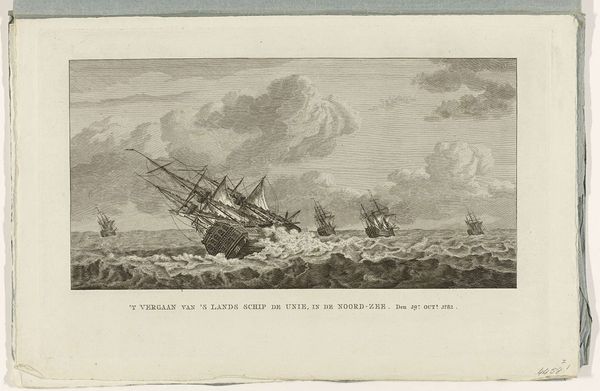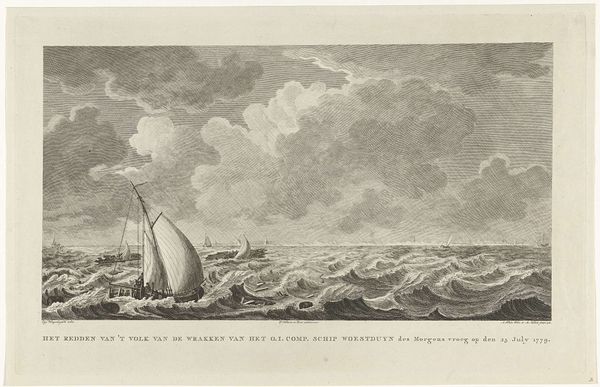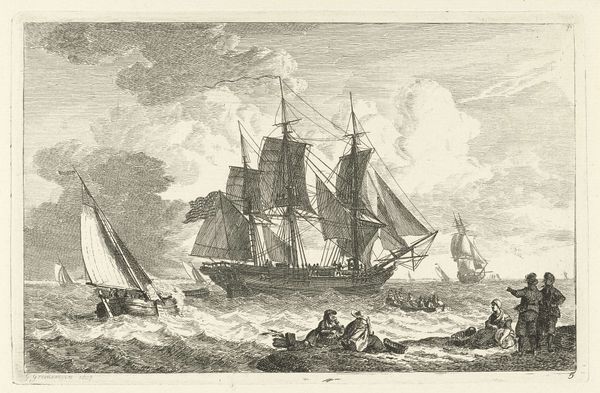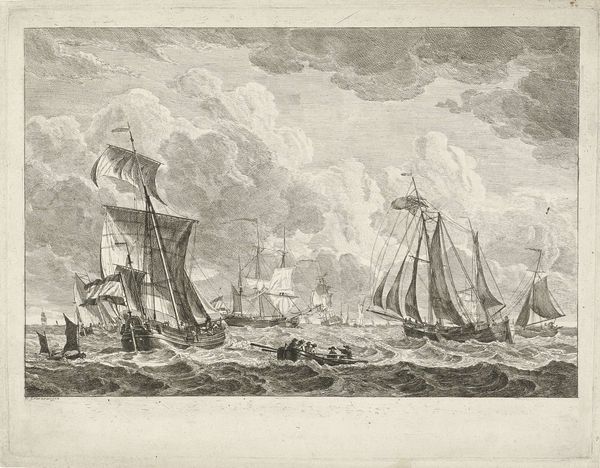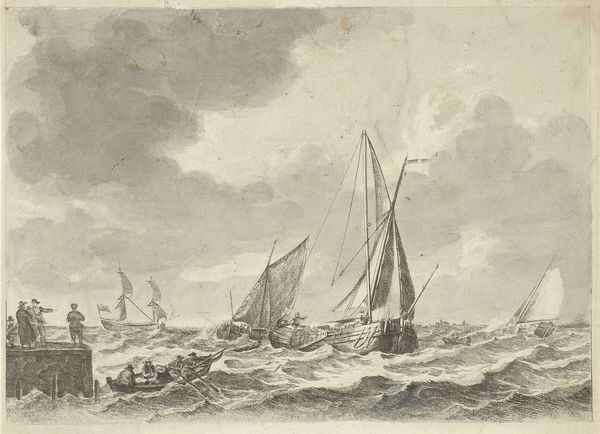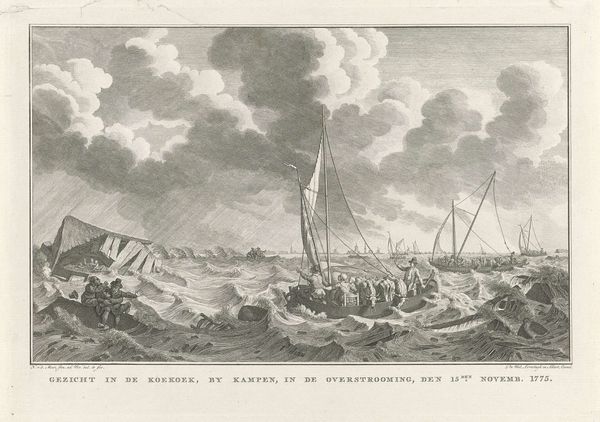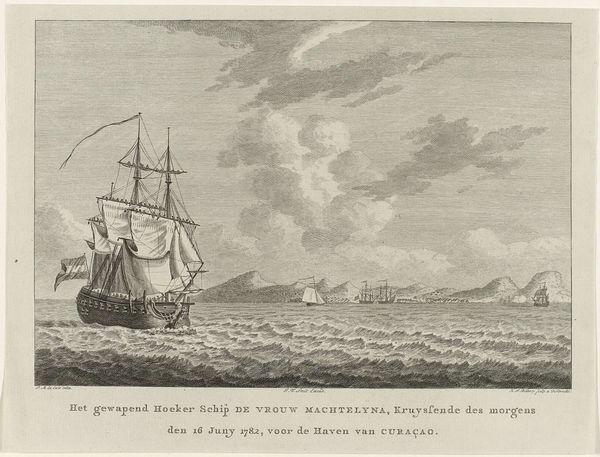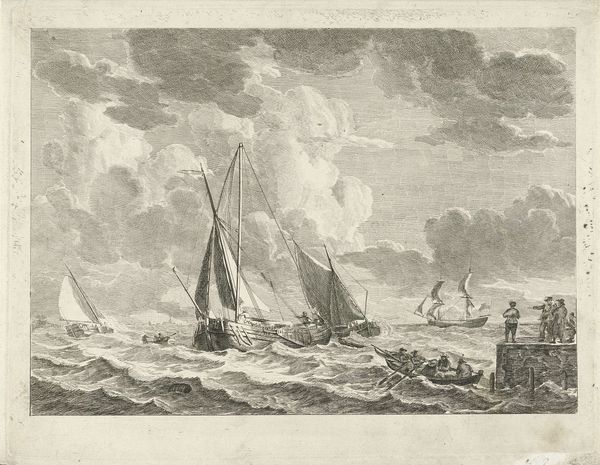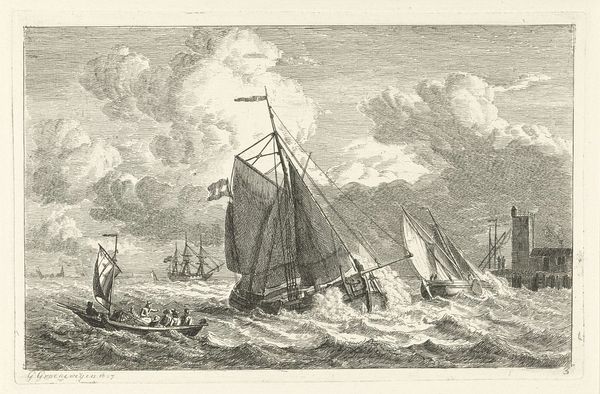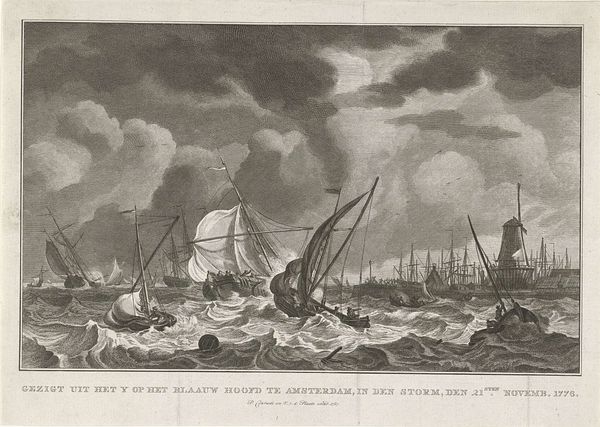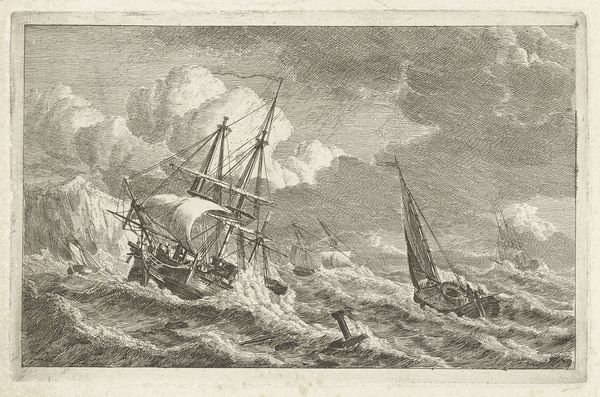
Dimensions: height 257 mm, width 361 mm
Copyright: Rijks Museum: Open Domain
Curator: Here at the Rijksmuseum, we have an arresting print titled "The Stranding of the VOC ship Woestduin off the Zeeland Coast, 1779," an engraving from 1779 by Dirk de Jong. What's your first take? Editor: Chaos. And yet, meticulous chaos! Look at the sheer density of lines; the engraver really committed to conveying the roiling sea. One feels the peril instantly. Curator: The visual language is indeed potent. Considering it's an engraving, the texture and depth achieved are remarkable. The medium itself speaks volumes. Engravings were, after all, crucial in disseminating information rapidly. Editor: Precisely! This isn't just about a shipwreck; it's a communication. The central motif is undeniably that listing vessel, a symbolic wreck amidst the fury, no longer the potent trader it once was. Is it meant as a moral commentary, I wonder? A sign of Dutch mercantile vulnerability? Curator: Or a sign of nature's indifference? Baroque sensibilities are definitely visible. But, it is an accounting too; consider how the depicted rescue efforts offered a narrative that the VOC company could endorse to signal the saving of lives even as ships were lost. The material reality is always multifaceted, here, even with the ink. Editor: That rescue is vital. Note how vulnerable those figures are, practically swallowed up by the sea! They cling to hope. The overall effect emphasizes humanity's fragile hold. This evokes such primal fears - a loss of control and safety. Curator: See too, that this scene depicts more than individual struggle. It puts forth the industrial scale needed to process, transport, disseminate, and commodify this specific maritime disaster. Each engraved line took physical labor; labor aimed at an ever-demanding, consuming public. Editor: A good point about labor, there’s the human toll visible in this print at all scales. Ultimately, I see enduring archetypes of struggle against the abyss. Curator: Indeed. Beyond its explicit subject, the artwork presents a lens for assessing historical perception, production, and also societal response.
Comments
No comments
Be the first to comment and join the conversation on the ultimate creative platform.
